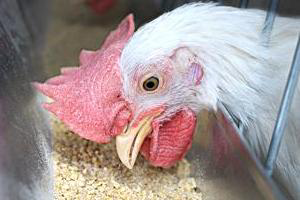Feed costs drive better bird selection

Over the last five years, the costs of poultry feed ingredients have increased substantially. This has been due to an increased use of corn for ethanol production and a greater overall global feed grain demand. Across the poultry industry this has led to higher production costs and reaffirmed the importance of feed efficiency on profitability.
The effect that an increase in feed costs has on profitability is a clear driver for the selection for birds with better feed efficiency. Feed efficiency selection can be achieved using a number of different analytical methods. Selection for feed conversion ratio (FCR) has been used to improve feed efficiency with success but using a ‘ratio’ trait has mathematical limitations because selection pressure tends to be placed on the component traits of FCR in a non-linear manner. Another measure, residual feed intake (RFI) shows moderate to high heritability and does not have the mathematical limitations associated with FCR. RFI has little to no correlation with production traits and this indicates that genetic improvement of RFI within a selection index can be done without the confounding issues inherent with FCR.
Improvements in RFI or FCR have a favourable effect on environmental emissions and decreases the environmental impact of poultry production. The current global production of ammonia, CH4, and N2O by the poultry industry is significant, at levels of 2.1, 29.44 and 279 million tonnes CO2eq, respectively. Reductions in emissions can be achieved via improvements in feed efficiency by lowering amounts of manure excreted and decreasing emitted by-products such as ammonia and greenhouse gases (N2O, CO2 and CH4). Consequently, improvements in feed efficiency can not only increase profitability of the poultry industries by lowering production costs but also decrease environmental impact by reducing environmental emissions.
| This is an abstract from the World ‘s Poultry Science Association‘s Journal. To purchase report options: |











